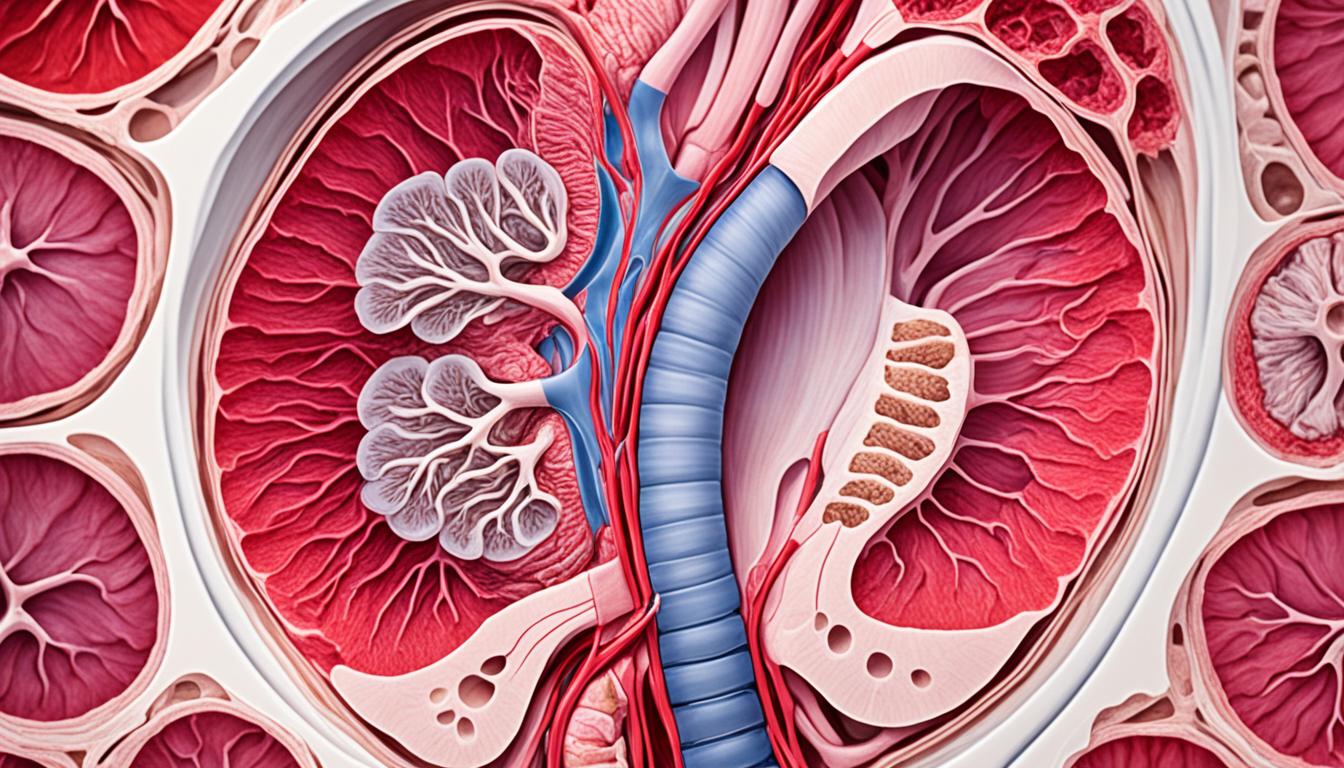Issues with the pelvic floor, like a prolapsed bladder, can really lower someone’s life quality. The current ways to treat a prolapsed bladder don’t always work well. This makes finding new treatments important. Stem cell therapy is one of these new possible treatments for prolapsed bladder and other pelvic floor problems. This review looks at how well stem cell therapy does for these issues.
Key Takeaways:
- Pelvic floor disorders, including prolapsed bladder, can greatly affect the quality of life.
- Traditional treatment options may not always provide satisfactory outcomes for prolapsed bladder.
- Stem cell therapy shows promise as an alternative treatment strategy for pelvic floor disorders.
- This systematic review will evaluate the current status of stem cell therapy for prolapsed bladder and other pelvic floor disorders.
- Further research is needed to determine the safety and effectiveness of stem cell therapy for prolapsed bladder.
The Role of Stem Cells in Treating Prolapsed Bladder
Stem cells are becoming very important in regenerative medicine and tissue engineering. They offer hope in treating health problems like stress urinary incontinence and prolapsed bladder.
In studies with animals, stem cells have shown they can help repair tissues. This leads to new ideas for treating conditions like a prolapsed bladder. However, no direct studies on stem cell therapy for prolapsed bladder were found in a recent review of clinical trials.
The review did find that stem cell injections were safe for stress urinary incontinence and anal incontinence. But, it’s not clear if stem cells can help with these problems, including prolapsed bladder, in the long-term.
More research is needed to know if stem cell therapy is effective for prolapsed bladder. We need bigger studies to get strong proof and understand the benefits of stem cells for these issues.
Symptoms, Causes, and Treatment of Prolapsed Bladder
A prolapsed bladder happens when the bladder’s supporting tissues weaken. This causes the bladder to sag into the vagina. It results in symptoms like pelvic pain, leaks of urine, trouble urinating, and a vaginal bulge. Things like being overweight, going through menopause, having babies, and having a chronic cough can lead to this issue.
How do we fix a prolapsed bladder? Well, it can start with simple steps like doing exercises that help your pelvic floor. Doctors might also suggest losing weight or avoiding activities that strain your pelvic area. If the case is severe, surgery might be needed to help lift the bladder back into its place.
There’s also an exciting new way to treat this problem with stem cells. These tiny cells can become different tissues, like the ones in your pelvic floor. They might offer a new way to repair the damage. While this method is still new, early studies are promising.
Preventive Measures and Lifestyle Changes
How can you avoid a prolapsed bladder or stop it from getting worse? Start with keeping your weight in a healthy range and sitting and standing straight. Also, skip activities that stress your pelvic area. Doing exercises like Kegels helps keep your bladder in place.
After having a baby, it’s important to think about the health of your pelvic floor. Doing exercises in the months after birth can make a big difference. And if you have problems like leaking urine or a cough that won’t go away, treat them. This can stop more damage to your pelvic floor.
Conclusion
A prolapsed bladder is a common issue that can really change someone’s life. The usual ways to treat it sometimes don’t work well and people are not happy with them. But, there’s hope with stem cell therapy as a new possible treatment.
There’s not a lot of solid proof yet. But, early studies are looking promising. They hint that stem cells might help fix the issue by making new tissues. If this is true, it could be a major change in how we treat prolapsed bladder and improve many lives.
Yet, we need more solid proof through bigger studies. These studies will check if stem cell therapy is safe and really works for prolapsed bladder. More research in this area could lead to better and more focused treatments, which would be good for people not just in Thailand but everywhere.

